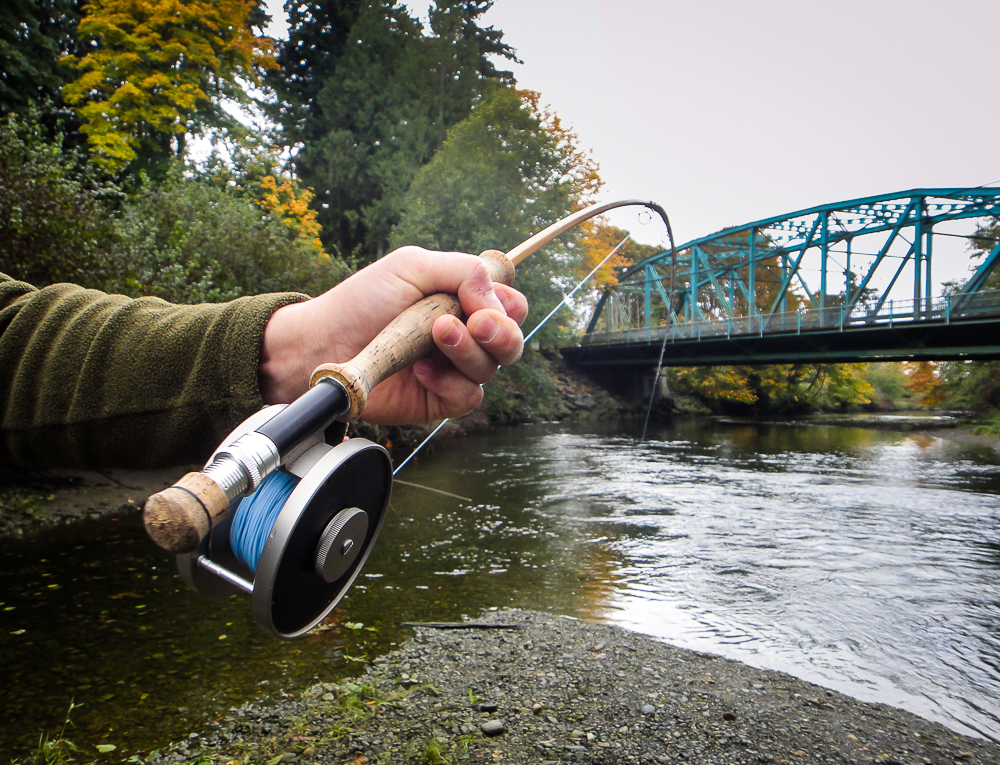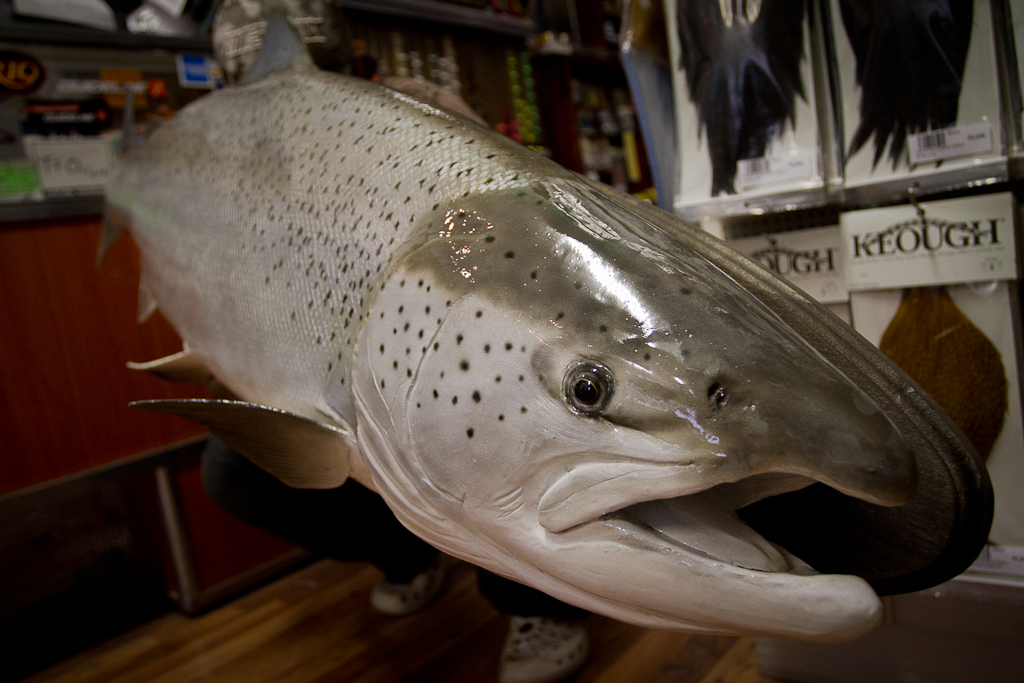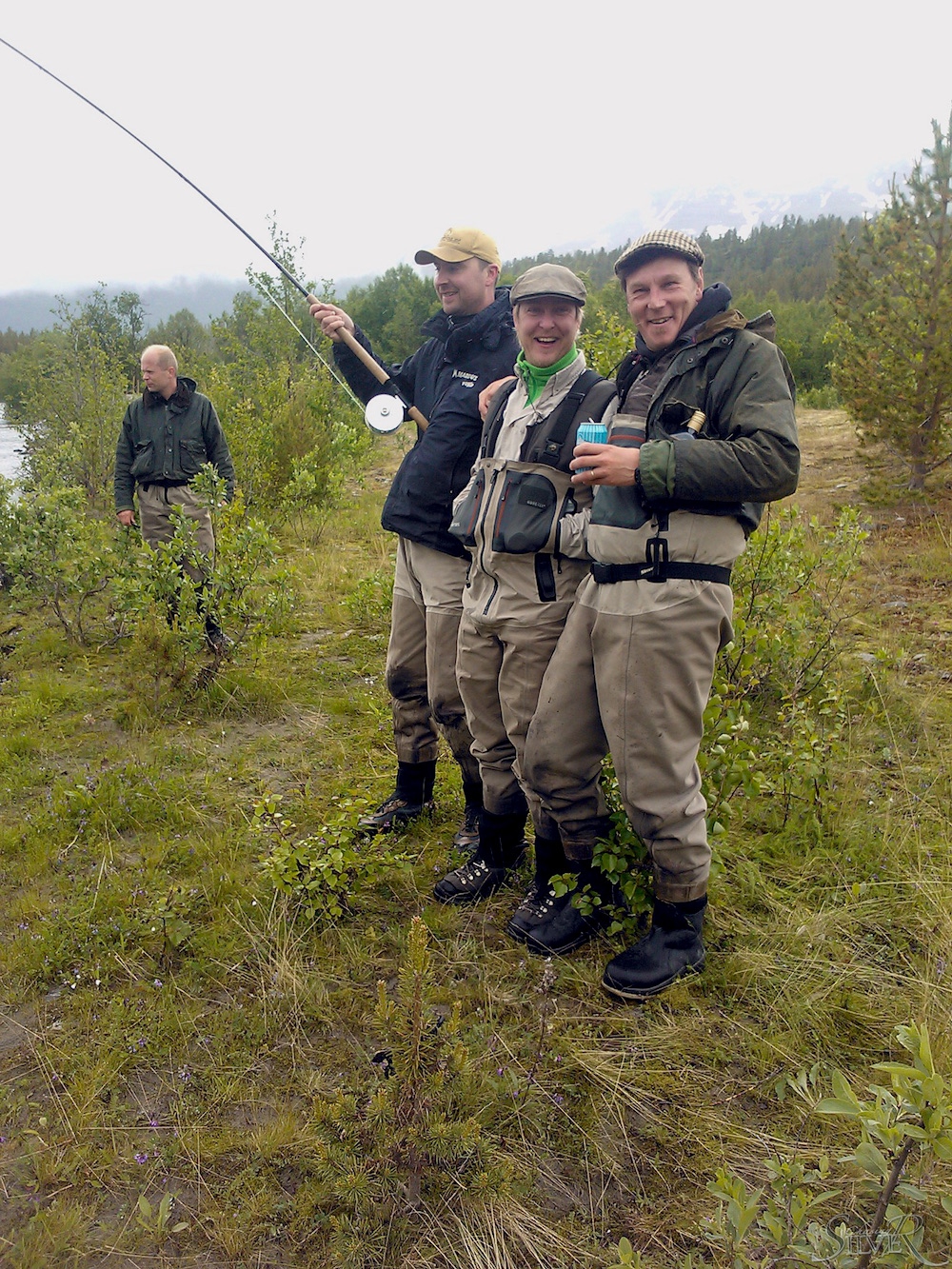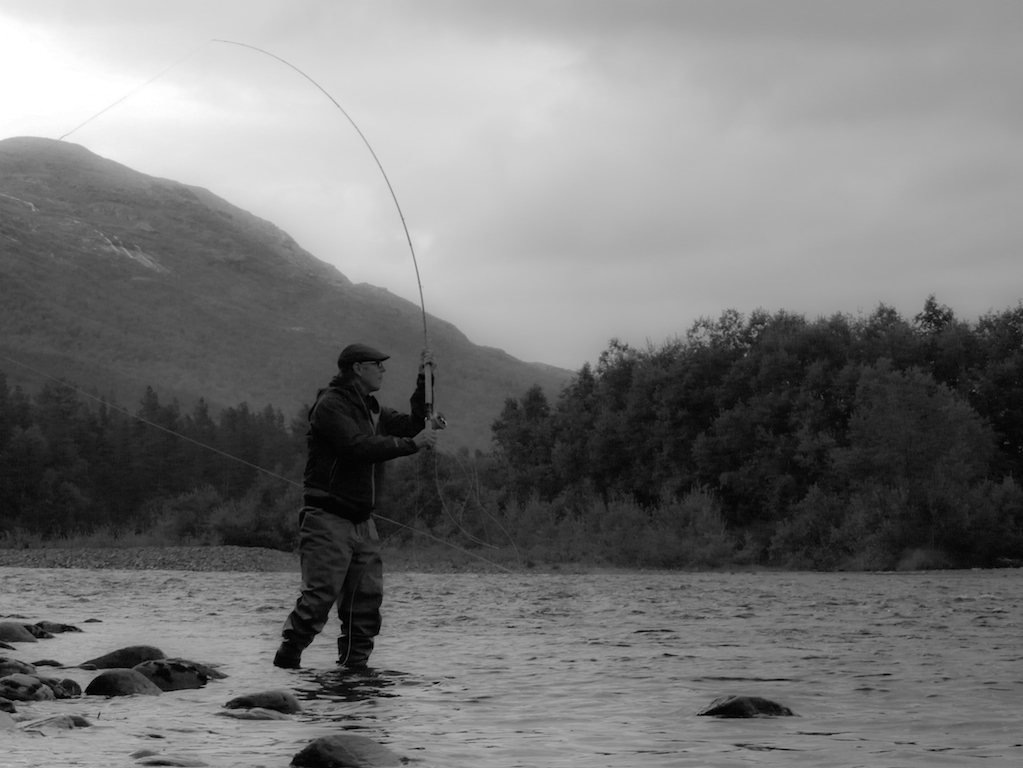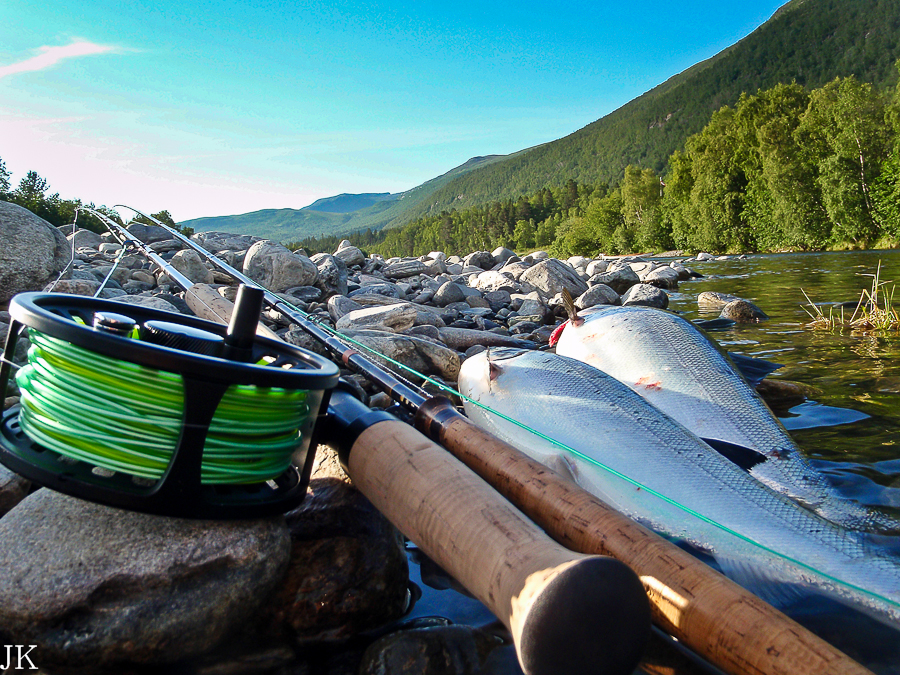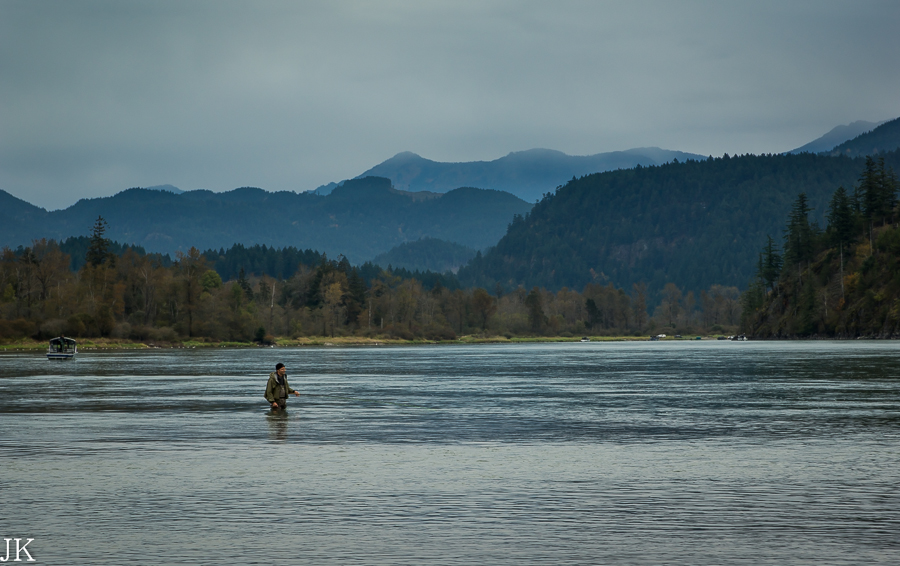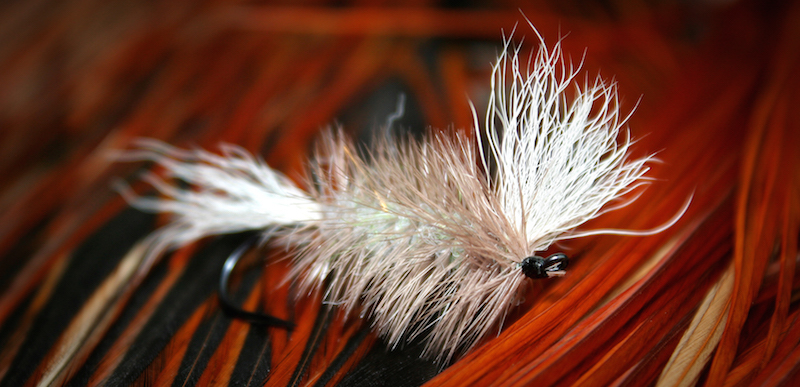
Chasing Atlantic silver with dry flies is my favorite thing to do and also by far the most effective way to catch the fabled salmon for me. And my favorite dry is a Finnish specialty, Pompero. It has a lot common with Bomber, but there are some key elements that differentiate Pompero from its more famous American cousin.
The fly was originally made famous by Heikki Anttonen, who is now a days known in the smallish Finnish fly fishing social media scene as Mr. Pompero. As usual, people have adapted the fly to suit their style of fishing or just to please their eye more, and I’m no exception. This is the way I tie Pompero, and it has been very productive for me. But for example my dear fishing buddy ties quite many things differently and catches even more fish than me with the Pompero (and with any other fly for that matter), so I’m pretty certain that it’s less about the exact details and more about the way you fish the fly (of which talk more about in my article on issue 4/2014).
As you can see, I’m not such a skilled craftsman as some of my colleagues here in CS blogosphere, but for the fly to be effective it doesn’t necessarily need to look pretty for human eyes. Anyways, here’s the way I do it.
Pompero
- Hook: #4 TMC 7989
- Thread: Black
- Tail: White calf tail
- Body: Grey polypropylene, shaped as cigar
- Hackle: Dun
- Wing: White calf tail
- Head: Thread
Pompero is quite an simple fly to tie and you can do without a lengthy list of materials often required for more classical patterns. Basically you need just a hook, some calf tail, polypropylene and a good quality hackle.

Hook
My standard choice of hook has lately been TMC 7989 in size 4. It has quite light wire, which makes for a nice high floating fly but is lacking when fighting the big fish. The size 4 has a little thicker wire and so far I haven’t lost a fish because of the hook (though they really haven’t been put to test with the biggest fish in the hardest places), but especially the size 6 feels just too light for me, so I’m still looking for the right hook for smaller Pomperos. Right now I’m using TMC 5212 terrestrial hooks for them, but lost a few fish because of the hook last summer, so I’m not completely satisfied with it.
Another good option is Partridge’s CS42 with the standard size being 6 (it actually makes for a slightly bigger fly than #4 TMC). It has been proven to be a truly durable hook. Downside in it is that the point of the hook is really short and it wears out when sharpening the hook. Good thing with dries is that you don’t have to sharpen them so often, since they’re not hitting the bottom.
I also know few people who like to use heavy wired nymph hooks especially in smaller sizes to help when you fight with that 15 kilo monster, but so far I haven’t been willing to make the trade-off with floatability. Maybe that will happen after I lose the first truly big one because of the hook.
Body
I make the material for the body by cutting some polypropylene yard into about 1 centimeter pieces. Then I Pluck and roll the material in your hands to brake fiber and mix it up. I usually mix just a hint of green or red yard into the body. I honestly think it’s more because of a habit than anything that really affects the fishing. This way I can change flies into something a little different if the need arises, but I really haven’t observed any significant differences because of this toning.
You can of course make some more radical changes to colors of the fly for example by adding a hot spot or a belt into the fly. Or you can tie the whole fly in completely different colors. But for me just the basic grey has by far been the most productive color and the standard size 4 grey Pompero is my first weapon of choice in any dry fly fishing situation.
Hackle
Finding the right kind of hackle is by far the most challenging part of tying the Pompero. The hackle in Pompero needs to be thick with stiff barbs, since the main thing keeping the fly afloat is the hackle. This is one thing that differentiates it from Bomber, which is floating more on its deer hair body.
The best feathers that are long enough (were talking minimum of 15 centimeters here) and have long, but even barbs that don’t taper too much are found in saddles. The best saddles to find these are most often the lower grade ones. The modern saddles have been genetically bred to have optimal material for dries the size 10 and below. This, alongside with the low availability of saddles have made the right kind of hackle material hard to find. Web stores are not much of a use here, since you have to inspect the saddles yourself to find the right ones.
Even the most suitable candidates usually have maybe 10-20 great and another 10-20 adequate feathers. Every time I visit a fly shop, local or one that is new to me, I always browse through their storages of saddles in case I find right kind of material. If I run into one, I immediately purchase it. The last decent saddle I found was two years ago. I’m just happy I’m not tying these things commercially, since it would really be a pain in the ass to be continually searching for the right hackle material.
Right now I have two suitable saddles, older Hareline Pro Grade Dun saddle that is perfect and cost me only 20€. I have for long thought that I have used all the usable feathers from it, but still find a few suitable candidates if I look for long enough. Newer and more expensive saddle is Whiting Pro Grade, but it’s not as productive as was Hareline in its heyday. Too much material for smaller flies.
In case you can’t find suitable material it’s possible to tie the hackle in two parts: first the one for the body and another around the wing. In these cases you might find usable material from some necks also, but generally the best hackles comes from the saddles.
Tying
 Start the fly by building a nice base with thread. The color of the thread doesn’t matter much, you can use white, black or maybe even some brighter color to make a nice hot spot on the head. With TMC I like to use black thread for the classic looks.
Start the fly by building a nice base with thread. The color of the thread doesn’t matter much, you can use white, black or maybe even some brighter color to make a nice hot spot on the head. With TMC I like to use black thread for the classic looks.
Take a nice bunch of white calf tail for the tail. The tail can be quite thick since it is important part of the shape the fly leaves on the surface. Longest hairs should be about the length of the hook and thicker part length of the body.

Tie the tail in. Cut it about 2/3 of the length of body and secure firmly with thread.

Take a bit thicker bunch of white calf tail for the wing and use hair stacker to make it even. Tie it in and then secure by going towards the eye of the hook with the thread. Leave enough room for a few turns of hackle and a head.

Spread the wing out to form a nice V-shape. Prop the wing up with the tying thread. Then cut the excess material from three different lengths to make it tapered. Secure with thread to make nice cigar-shaped base to build the actual body on.

Tie in the hackle from the tip of the stem.

Dub some polypropylene on the thread and start building the body. When dubbing the body I have lately been doing the same thing as Mr. Pompero himself and use this natural wax that is made for leather shoes to keep them dry. It helps with the polypropylene (it can be a bit difficult to handle because the fiber is quite rough) and the fly floats better when you soak the whole thing with the stuff when you’re tying it even if you use floatant on the riverside.
Once again it’s not a necessity, I did just fine without the wax for quite many years, just a small helpful gimmick. I didn’t use it when tying the fly photographed here since it makes the fly look a bit silly and wet before it settles in.

Continue building a nice cigar-shaped body from the polypropylene.

Roll the hackle around the body in even turns. Make the hackle quite thick.
This can be a tricky part, since it’s easy to break the light stem when you start to roll it around the body. Some use thin monofilament line to secure the hackle. This makes the fly more durable, but I’m often too lazy to do this and been doing ok even without the extra reinforcement.

Make thicker turns of hackle near the base of the wing. I tend to tie the wing in upright position and then it’s possible to make some turns on the other side of the wing also. You can also leave the wing in Bomber-style forward-leaning position. Then you naturally can’t tie the hackle in front of the wing.
Secure the hackle, form a nice head and use some super glue or varnish to finish the fly.
And there you have it. Pompero is simple yet amazingly efficient fly for Atlantic Salmon. It can be also used for any species interested in dry flies by varying sizes and coloration. For example a slightly smaller Pompero in size 6 or 8 is an excellent attractor pattern for brown and rainbow trout. And it’s a ton of fun to fish with dries, so I strongly recommend to give it a try.






